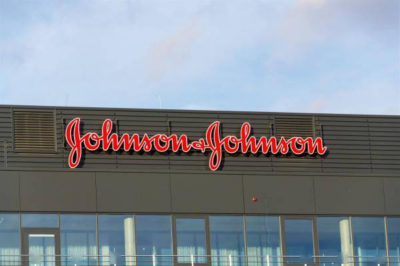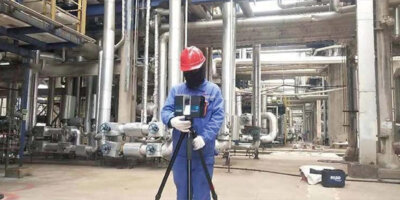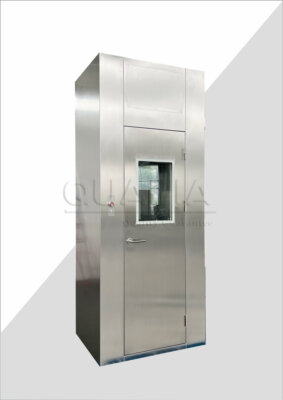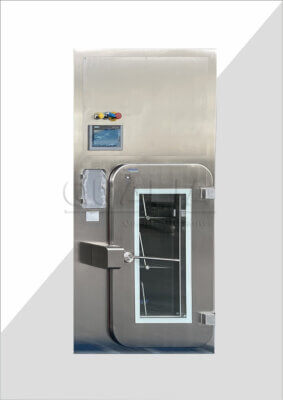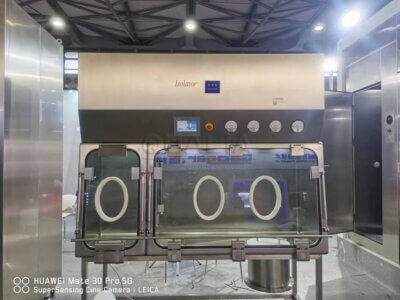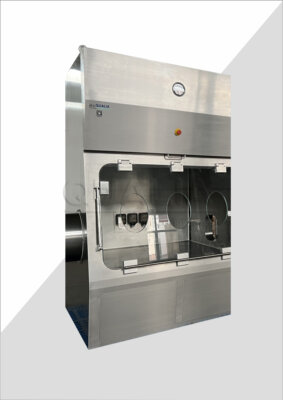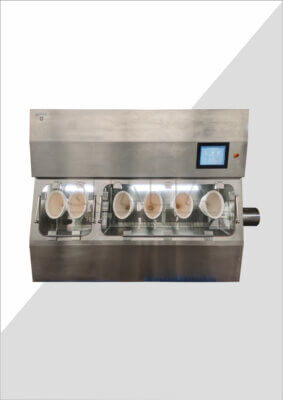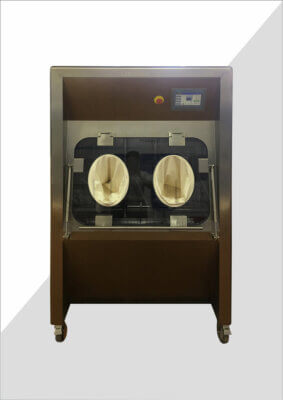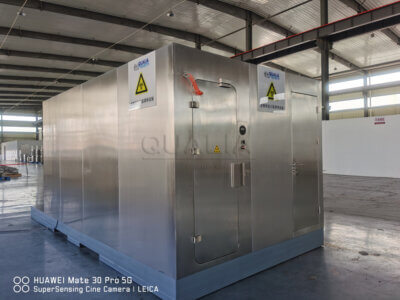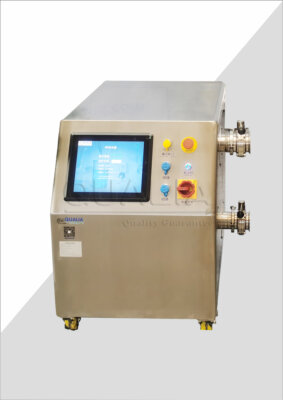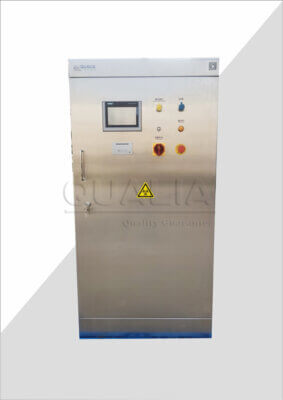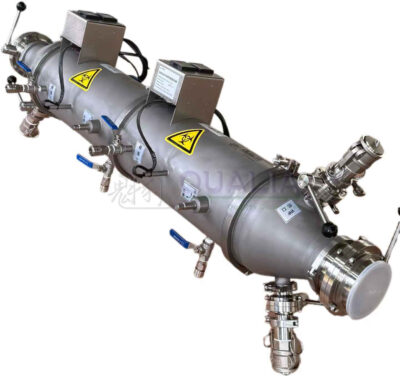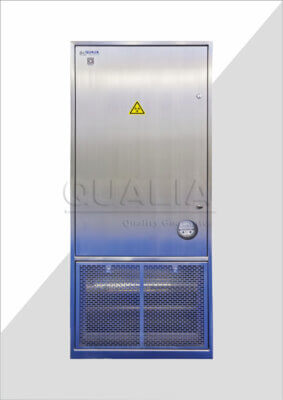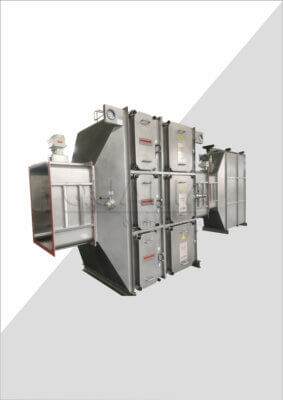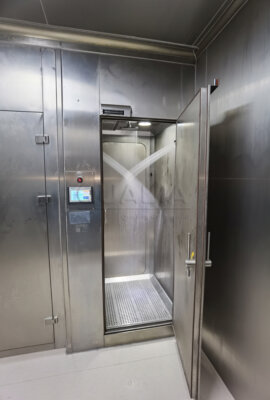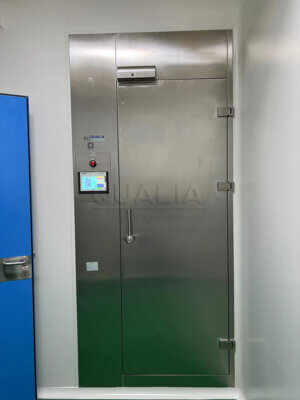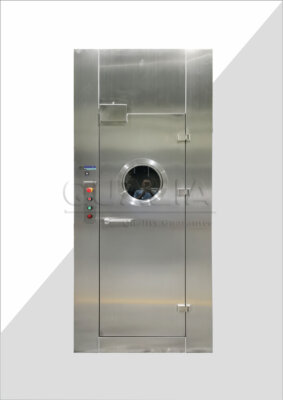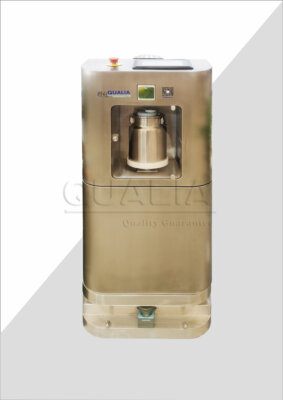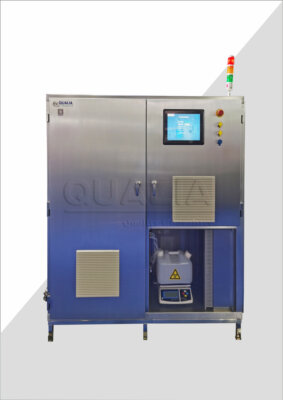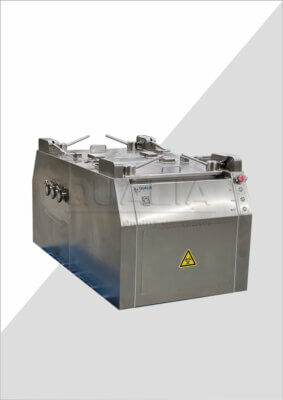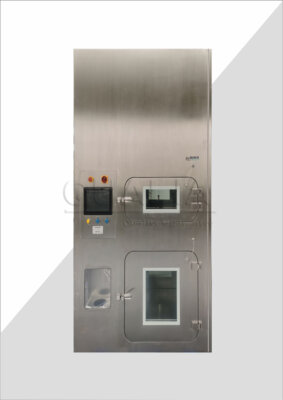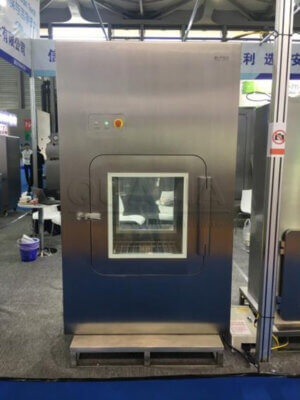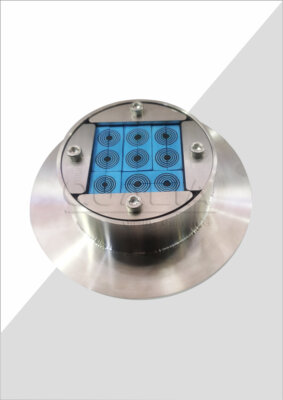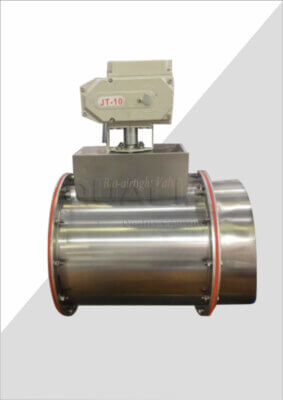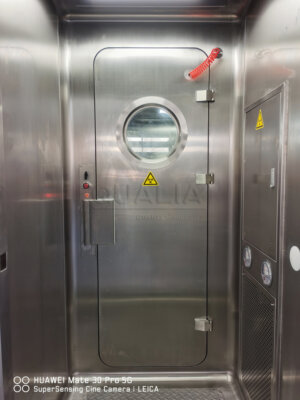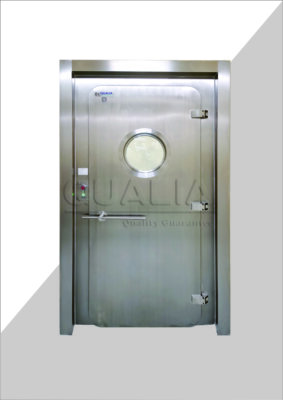The pharmaceutical and biotechnology industries face an escalating challenge: maintaining sterile environments while meeting increasingly stringent regulatory requirements. A single contamination event can cost manufacturers millions in product recalls, regulatory penalties, and damaged reputation. Traditional door systems often fail to provide the airtight integrity required for critical manufacturing processes, leaving facilities vulnerable to cross-contamination and regulatory non-compliance.
This vulnerability becomes particularly acute during product changeovers, maintenance activities, and personnel transitions – precisely when contamination risks are highest. The consequences extend beyond immediate financial losses; FDA warning letters, production shutdowns, and compromised product quality can permanently damage a company’s market position and patient safety record.
GMP APR doors with mechanical seal systems offer a comprehensive solution to these challenges. This article explores the technical specifications, regulatory requirements, and practical implementation strategies that enable manufacturers to achieve consistent compliance while optimizing operational efficiency. You’ll discover validation protocols, cost-benefit analyses, and real-world case studies that demonstrate how advanced door sealing technology transforms contamination control strategies.
What Are GMP APR Doors and Why Do They Matter?
GMP (Good Manufacturing Practice) APR (Airlock Personnel Room) doors represent a critical component in pharmaceutical and biotechnology facility design. These specialized door systems create controlled transition zones between areas of different cleanliness classifications, preventing cross-contamination during personnel and material movement.
QUALIA Bio-Tech has observed that GMP compliant door seals must withstand differential pressures ranging from 5 to 50 Pascals while maintaining consistent sealing performance across thousands of operational cycles. The mechanical seal systems integrate multiple sealing technologies, including inflatable gaskets, compression seals, and magnetic locking mechanisms.
Core Components of Mechanical Seal Systems
Modern GMP APR doors incorporate three essential sealing elements:
| Component | Function | Performance Standard |
|---|---|---|
| Primary Mechanical Seal | Base-level contamination barrier | ≥99.95% particle retention |
| Secondary Inflatable Gasket | Pressure differential maintenance | 0.1-0.5% air leakage rate |
| Tertiary Magnetic Lock | Emergency containment | <2 second engagement time |
The integration of these components creates a multi-layered defense system that adapts to varying operational conditions. In our experience working with pharmaceutical manufacturers, facilities using properly validated mechanical seal systems report 40-60% fewer contamination incidents compared to conventional door systems.
Regulatory Context and Market Drivers
FDA 21 CFR Part 211 mandates that pharmaceutical facilities maintain “adequate controls over computer or related systems” and environmental conditions. This regulation directly impacts door system selection, as FDA compliant APR doors must demonstrate consistent performance through extensive validation documentation.
Industry data indicates that 78% of FDA warning letters related to contamination control cite inadequate environmental separation systems. The financial impact is substantial – the average cost of a contamination-related production shutdown exceeds $2.3 million per incident, not including potential product recalls or regulatory penalties.
How Do Mechanical Seal Systems Ensure GMP Compliance?
Mechanical seal technology in GMP APR doors operates on engineered precision, creating hermetic barriers through controlled compression and pressure management. The fundamental principle involves multiple contact surfaces that compress against door frames with precisely calibrated force distribution.
Validated mechanical seals typically achieve leak rates below 0.1% at standard differential pressures, significantly exceeding industry baseline requirements. The mechanical advantage comes from the system’s ability to self-adjust based on pressure differentials – higher pressure differentials create proportionally stronger sealing forces.
Technical Specifications and Performance Metrics
Advanced mechanical seal systems incorporate real-time monitoring capabilities that track sealing performance across operational cycles:
- Compression Force Range: 150-400 pounds per linear foot
- Temperature Resistance: -20°C to +80°C operational range
- Chemical Compatibility: Resistant to standard pharmaceutical cleaning agents
- Cycle Life: Validated for >100,000 operational cycles
The sealing mechanism utilizes spring-loaded compression chambers that maintain consistent contact pressure regardless of thermal expansion or facility settling. This engineering approach eliminates the performance degradation common in static seal systems.
Integration with Facility Control Systems
Modern mechanical seal APR door systems interface directly with building management systems, providing real-time validation data and automated compliance documentation. The integration capabilities include pressure monitoring, cycle counting, and predictive maintenance alerts.
A recent implementation at a major pharmaceutical manufacturer demonstrated that integrated monitoring systems reduce validation documentation time by 65% while improving compliance confidence scores. The automated data collection eliminates manual recording errors and provides continuous verification of sealing performance.
What Are the Key FDA Requirements for APR Door Validation?
FDA APR door requirements mandate comprehensive validation protocols that demonstrate consistent performance under all operational conditions. The validation framework encompasses Installation Qualification (IQ), Operational Qualification (OQ), and Performance Qualification (PQ) phases, each with specific documentation and testing requirements.
According to FDA Guidance for Industry documents, door system validation must prove that the installed system “consistently produces a result or product meeting its predetermined specifications and quality characteristics.” This standard requires extensive testing and documentation that many facilities underestimate in terms of time and resource requirements.
Installation Qualification (IQ) Requirements
The IQ phase verifies that GMP APR doors are installed according to approved specifications and manufacturer recommendations:
| Validation Element | Testing Requirement | Acceptance Criteria |
|---|---|---|
| Dimensional Verification | All clearances measured | ±2mm of specification |
| Electrical Integration | Control system connectivity | 100% signal verification |
| Mechanical Operation | Full cycle testing | <5 second cycle time |
| Safety Systems | Emergency override testing | <1 second response |
IQ documentation must include detailed drawings, material certifications, and installation photographs that demonstrate compliance with design specifications. The process typically requires 40-60 hours of dedicated engineering time for complex door systems.
Operational and Performance Qualification
OQ testing validates that GMP door sealing systems perform consistently across their operational range. Testing protocols include pressure decay testing, particle contamination studies, and endurance cycling under various environmental conditions.
Performance Qualification represents the most critical validation phase, as it demonstrates real-world performance under actual manufacturing conditions. PQ testing typically extends over 30-90 days and includes documentation of all operational parameters during normal production activities.
Industry research indicates that facilities with comprehensive validation documentation experience 45% fewer audit findings related to contamination control systems. However, the validation process presents significant challenges – 60% of manufacturers report that door system validation takes 25-40% longer than initially planned due to documentation complexity and testing requirements.
Which Industries Benefit Most from GMP Compliant Door Seals?
Pharmaceutical manufacturing leads adoption of validated mechanical seals, particularly in facilities producing sterile injectable products and high-potency compounds. The regulatory requirements in these applications demand the highest levels of contamination control, making advanced door sealing systems essential rather than optional.
Biotechnology companies developing cell and gene therapies represent the fastest-growing market segment for GMP APR doors. These applications often involve multi-million dollar batch values, where a single contamination event can result in total product loss and significant regulatory scrutiny.
Case Study: Sterile Injectable Manufacturing
A major pharmaceutical manufacturer implemented mechanical seal APR doors across their sterile manufacturing facility, replacing conventional door systems that had caused three contamination incidents over 18 months.
Implementation details:
- 24 GMP APR doors installed across Grade A/B transition areas
- Average installation time: 6 hours per door system
- Validation period: 45 days including full PQ documentation
- Total project cost: $340,000 including validation
Quantified results:
- Zero contamination incidents in 24 months post-installation
- 35% reduction in environmental monitoring failures
- 60% decrease in cleaning validation time
- Annual savings: $1.2 million in avoided shutdowns and reduced testing
Biotechnology and Advanced Therapy Applications
Cell therapy manufacturing presents unique challenges due to the combination of sterile processing requirements and patient-specific production runs. Advanced GMP door systems in these applications must accommodate frequent room changeovers while maintaining absolute contamination control.
A leading cell therapy company reported that upgrading to mechanical seal APR doors enabled them to reduce changeover time by 40% while achieving 99.8% environmental monitoring pass rates. The improved efficiency allowed the facility to increase production capacity by 25% without additional cleanroom construction.
Food and Beverage Industry Adoption
While pharmaceutical applications drive technology development, food and beverage manufacturers increasingly recognize the value of GMP-standard door systems. Facilities producing infant formula, dietary supplements, and organic products face similar contamination risks and regulatory scrutiny.
How to Validate and Maintain GMP APR Door Systems?
Validation of GMP compliant door seals requires a systematic approach that addresses both initial qualification and ongoing performance verification. The validation strategy must account for the door system’s integration with facility HVAC, automation systems, and quality management protocols.
Successful validation programs establish clear performance criteria before installation begins. This proactive approach prevents costly delays and ensures that testing protocols align with regulatory expectations and operational requirements.
Validation Protocol Development
Effective validation protocols incorporate risk-based approaches that prioritize testing based on potential impact to product quality:
High-risk parameters (requiring continuous monitoring):
- Seal integrity under maximum pressure differential
- Emergency operation reliability
- Integration with facility safety systems
Medium-risk parameters (periodic verification):
- Cycle time consistency
- Cleaning effectiveness
- Wear pattern analysis
Low-risk parameters (annual verification):
- Dimensional stability
- Cosmetic condition
- Documentation completeness
The risk-based approach reduces validation time by 30-40% while maintaining comprehensive coverage of critical quality attributes. In our experience, facilities that invest in thorough protocol development complete validation 35% faster than those using generic templates.
Preventive Maintenance Strategies
Mechanical seal systems require specialized maintenance protocols that preserve validation status while ensuring optimal performance. The maintenance strategy must balance proactive component replacement with validation change control requirements.
| Maintenance Activity | Frequency | Validation Impact |
|---|---|---|
| Seal Compression Verification | Monthly | No revalidation required |
| Gasket Replacement | 18-24 months | OQ testing required |
| Control System Updates | As needed | Full validation required |
Predictive maintenance using integrated monitoring systems identifies potential seal degradation before performance impacts occur. Facilities using predictive maintenance report 50% fewer unplanned maintenance events and 25% lower total maintenance costs compared to reactive maintenance approaches.
Despite these advantages, maintenance presents challenges. Replacement parts for specialized door systems often require 6-8 week lead times, and maintenance must be coordinated with production schedules to minimize operational disruption.
What Are the Cost Considerations and ROI for GMP Door Sealing?
Investment in GMP APR doors with mechanical seal systems represents a significant capital expenditure, typically ranging from $12,000 to $25,000 per door including installation and validation. However, the total cost of ownership analysis reveals compelling financial benefits when contamination risks and regulatory compliance costs are considered.
The primary cost drivers include initial equipment procurement, installation and commissioning, validation documentation, and ongoing maintenance. Many facilities underestimate validation costs, which typically add 25-35% to the base equipment cost for first-time implementations.
Return on Investment Analysis
Financial benefits of mechanical seal door systems compound over time through multiple value streams:
Direct cost avoidance:
- Contamination incident prevention: $2.3M average cost per incident
- Reduced environmental monitoring failures: $15,000-45,000 per investigation
- Lower cleaning validation costs: 35-60% time reduction
Operational efficiency gains:
- Faster room turnover: 25-40% time reduction
- Increased production capacity utilization
- Reduced regulatory audit findings and associated remediation costs
A comprehensive ROI analysis conducted across 15 pharmaceutical facilities showed an average payback period of 18-24 months for mechanical seal APR door investments. Facilities with higher contamination risk profiles achieved payback in as little as 12 months.
Implementation Cost Optimization
Strategic implementation approaches can significantly reduce total project costs while maintaining validation integrity. Phased installations allow facilities to validate processes and training on smaller door populations before full-scale deployment.
Bundling door installations with planned facility upgrades or maintenance shutdowns reduces installation labor costs by 20-30%. Additionally, standardizing on single supplier systems simplifies spare parts inventory and maintenance training requirements.
While the benefits are substantial, implementation challenges include extended lead times (12-16 weeks for custom configurations), coordination with multiple facility systems, and the need for specialized installation expertise. These factors require careful project planning and may impact facility production schedules.
How to Choose the Right GMP APR Door Solution?
Selecting optimal GMP door sealing systems requires comprehensive evaluation of facility-specific requirements, regulatory obligations, and operational constraints. The decision framework must balance technical performance capabilities with long-term total cost of ownership considerations.
The most critical selection factors include contamination risk classification, pressure differential requirements, cycle frequency expectations, and integration capabilities with existing facility systems. Facilities often focus primarily on initial cost, overlooking validation complexity and long-term maintenance requirements that significantly impact total ownership costs.
Technical Specification Evaluation
Door system selection should prioritize performance characteristics that directly impact contamination control effectiveness:
Primary selection criteria:
- Seal integrity performance under operational pressure ranges
- Cycle life validated through accelerated testing protocols
- Integration capabilities with facility automation systems
- Compliance with applicable regulatory standards (FDA, EMA, etc.)
Secondary considerations:
- Installation flexibility and facility integration requirements
- Maintenance accessibility and spare parts availability
- Supplier validation support and documentation quality
- Training and technical support capabilities
Professional GMP APR door systems should provide comprehensive validation packages that include pre-qualified testing protocols, factory acceptance testing documentation, and ongoing technical support throughout the validation process.
Implementation Strategy and Timeline
Successful door system implementations follow structured project approaches that coordinate technical installation with validation requirements and operational scheduling:
Phase 1: Design and Specification (4-6 weeks)
- Facility assessment and requirements definition
- Technical specification development and supplier selection
- Validation protocol preparation and approval
Phase 2: Procurement and Manufacturing (8-12 weeks)
- Equipment manufacturing and factory acceptance testing
- Installation planning and resource coordination
- Validation preparation and documentation review
Phase 3: Installation and Validation (6-8 weeks)
- Physical installation and commissioning
- IQ/OQ/PQ execution and documentation
- Training and knowledge transfer
The structured approach ensures that all stakeholders understand project requirements and timelines. Facilities that follow comprehensive implementation strategies complete projects 30% faster and experience 50% fewer post-installation issues compared to those using informal project management approaches.
GMP APR doors with mechanical seal systems represent a strategic investment in contamination control and regulatory compliance. The technology delivers measurable improvements in facility performance while reducing long-term operational risks and costs.
The key to successful implementation lies in comprehensive upfront planning, thorough validation execution, and commitment to ongoing maintenance excellence. Facilities that invest in professional-grade door systems and follow structured implementation approaches achieve superior contamination control performance and regulatory compliance confidence.
As regulatory requirements continue to evolve and contamination risks increase with more complex manufacturing processes, mechanical seal technology will become increasingly essential for maintaining competitive advantage in pharmaceutical and biotechnology manufacturing.
Consider your facility’s current contamination control challenges and regulatory compliance gaps. What would be the impact of achieving 99.95% contamination barrier effectiveness while reducing validation time by 60%? Explore advanced mechanical seal APR door solutions that transform contamination control strategies and deliver measurable ROI through improved operational efficiency and regulatory confidence.
Frequently Asked Questions
Q: What are GMP Compliant Mechanical Seal APR Doors, and why are they important?
A: GMP Compliant Mechanical Seal APR Doors are airtight doors designed with mechanical seals to meet Good Manufacturing Practice (GMP) standards. They are crucial in controlling contamination and maintaining sterile environments, particularly in pharmaceutical and biotech facilities. These doors ensure a tight barrier that prevents air and particle exchange, supporting compliance with FDA requirements and validation processes to uphold product safety and quality.
Q: How do these mechanical seal APR doors meet FDA requirements and validation standards?
A: These doors meet FDA requirements by providing robust, fail-safe sealing mechanisms that maintain containment even during power loss. Their design facilitates easy cleaning and validation in line with FDA and GMP expectations. Validation includes installation qualification (IQ), operational qualification (OQ), and performance qualification (PQ) to demonstrate consistent aseptic conditions and reliable function during critical operations.
Q: What features make mechanical seal APR doors suitable for high-containment areas like BSL3 or BSL4 labs?
A: Mechanical seal APR doors are ideal for high-containment labs because they:
- Use strong but flexible gaskets compressed against frames for airtight seals
- Include features such as raised thresholds to act as natural bunds for liquid containment
- Have fail-safe, manual compression arms that operate without compressed air
- Are constructed from materials like stainless steel or powder-coated steel for durability and cleanability
These attributes help to maintain strict environmental control and support containment protocols.
Q: What is the process involved in validating GMP Compliant Mechanical Seal APR Doors?
A: Validation involves multiple steps:
- Installation Qualification (IQ) – confirming proper installation according to specifications
- Operational Qualification (OQ) – testing door functions (seal integrity, compression force, alarm systems) under normal and stress conditions
- Performance Qualification (PQ) – verifying that the doors maintain aseptic conditions during actual operations
Additionally, routine leak testing and annual requalification ensure ongoing compliance with GMP and FDA standards.
Q: How do these doors contribute to maintaining aseptic processing environments?
A: By providing a proven airtight barrier that limits cross-contamination and controls airflow, GMP Compliant Mechanical Seal APR Doors help maintain grade A or critical zones. Their designs minimize seams and collection points, making cleaning more effective and reducing microbial harboring. The doors also integrate well with regulatory controls such as interlocks and automated monitoring to prevent unauthorized or untimely accesses, ensuring process integrity.
Q: Can you explain the differences between mechanical seal doors and pneumatic seal doors in the context of FDA compliance?
A: Mechanical seal APR doors use manual, fail-safe compression to achieve airtight sealing without reliance on power or compressed air, making them reliable during power loss. Pneumatic seal doors use air pressure to seal, providing flush thresholds suitable for wheeled traffic but dependent on an air supply. Both can be designed for FDA compliance, but mechanical seal doors are favored in applications requiring robust containment with minimal maintenance and simpler validation processes.
External Resources
- APR Doors with Airtight Mechanical Seals – Details mechanical seal APR doors designed for high containment in environments such as BSL3 and BSL4 labs, emphasizing their robust sealing, reliability without compressed air, and application scenarios.
- USDA / FDA / cGMP – Rytec Door – Highlights high-performance doors engineered specifically for FDA, USDA, and cGMP compliance, focusing on cleanliness, tight seals, minimal maintenance, and suitability for pharmaceutical and food industries.
- Mechanical Seal APR Door HC-MSD – PBSC Inc – Introduces a mechanical seal APR door designed for high containment with features such as 3-point compression, robust fail-safe seals, and applications in controlled environments.
- Major Regulatory Guidelines on Isolators & RABS – Reviews key FDA, EU GMP, and ISO requirements for containment systems like RABS and isolators, including validation protocols, cleaning, and qualification processes necessary for regulatory compliance.
- Compliance Program Program 7356.040 – FDA (PDF) – Provides detailed FDA cGMP compliance requirements relevant to sealed door systems in manufacturing, including documentation, intervention procedures, and process validation strategies for aseptic environments.
- Mechanical Seal Doors for Laboratories – Gives an overview of mechanical seal doors focused on laboratory containment, emphasizing engineering features for safety, integrity, and compatibility with high-specification environments.
Related Contents:
- Buy Mechanical Seal APR Doors | Quote Request & Pricing Comparison
- What Are Mechanical Seal APR Doors | Basic Components & Functions
- Understanding APR Door Sealing Technology | Types & Applications
- Mechanical Seal APR Door Systems | Installation Guide & Setup
- Understanding Pneumatic APR Door Seal Technology
- Mechanical Seal APR Doors | Pressure Control & Safety Principles
- Mechanical Seal APR Door Cost Analysis | ROI Calculator & Pricing
- What Are APR Door Pneumatic Seals and How They Work
- Manufacturing APR Door Seal Systems | Industrial Applications

